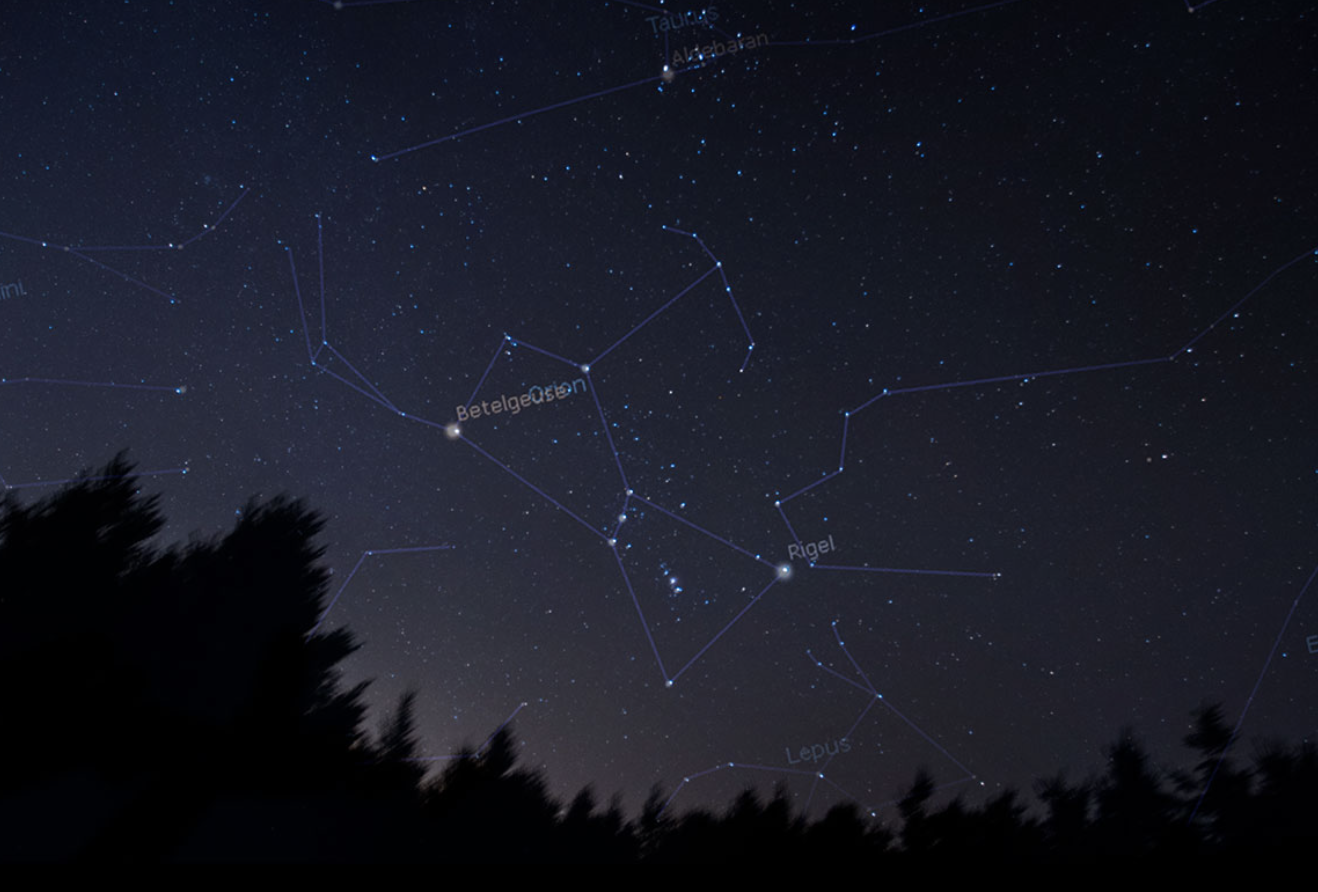SciFi | Sky Enigma

Sky Enigma
©2020 Vernon Miles Kerr, vernonmileskerr.com
A lot of us don’t appreciate, or have completely forgotten, how our world became what it is today. It began at the Winter Solstice in 2033. Someone must have noticed it around midnight GMT. That was when mobile phones started buzzing with notifications all around the world, continuing for the rest of the day. Twitter feeds from NASA and astronomical observatories were first:
“Massive data collapse in astral targeting and navigation systems”
“Hubble images have become scrambled.”
Later in the day, the public was calmed with assurances like,
“Data Collapse Not a Danger to Personal Computing”
“GPS system suffers no impact from astral data collapse”
“World Transportation System Unaffected by Bad Astronomical Data”
All of which was, at least, partially true. Everything here on Earth seemed unaffected. Life went on as usual. The sun rose and set; the moon went through her phases. Jupiter and Venus were in their correct positions above the horizon. But the thing that had changed was obvious to any Boy Scout or backyard astronomer: The stars were different.
The old constellations, Leo, Capricornus, Orion, Gemini – all of them – had been replaced by strange new ones. The arching Milky Way was no longer there, having been replaced by some similar nebulosity only visible from the Southern Hemisphere.
As the amateur astronomers began to point out these changes on social media, the Tweets from government ceased. During news conferences, queries were curtly shunted aside with, “The best minds are engaged in analysis and the public will be informed when we have some answers.”
Ten years later, those governmental answers were still not forthcoming. In the meantime, Earth’s social, political and religious underpinnings were demolished—and new ones began to coalesce from the rubble.
Earlier, while those governmental “best minds” were still engaged in analysis, astronomers not beholden to governmental support began to draw new star charts. They tried to extrapolate conclusions by doing before-and-after overlays of sky photographs. It was fruitless. The difference between past and present shots was absolute. There was no basis for comparison. Governmental silence was now perceived as governmental embarrassment. It seemed that, even with their near-unlimited economic and human resources, governments were stumped—and simply would not admit it. Historically, it would later be described as the beginning of Governmental-Irrelevance.
Having failed in their photographic comparisons, the non-governmental astronomers hypothesized that by finding familiar cepheid variables, (stars that were the “known, standard candles” in the Universe) they would be able to pinpoint the Solar System’s new location. They launched a worldwide star-survey with millions of amateur telescopes connected over social media. Still no luck. They found some variable stars, but those bore no relationship to the proven ones.
Human nature, with the emphasis on “nature,” abhors a vacuum. Predictably, social media went wild. The chatter became a war of words between two camps: The Theists and the Sciencers. To the Sciencers, their overall consensus—the one that made some kind of sense—was that “we’ve been moved.”
As ridiculous and physically impossible that hypotheses might have been, professional scientists were having difficulty disproving it. To make it worse, if we had been moved, it must have been to another part of the Universe, in or near some other galaxy—the one visible from Antarctica.
Also, it was easier for the Sciencers to imagine one star (our sun) along with its planets and Oort cloud, being moved than accepting the Theists’ cognitively short-circuiting theory that God had scrambled thousands of stars and galaxies, back and forth across multiple-billions of lightyears, in one night, just to give us a new view on things. But, from the standpoint of science—at least the science of 2033—even the “one star being moved” theory was ridiculous.
Given the failure to find out where we were, and how we’d gotten there, debate turned to why we’d been moved at all. The religious naturally assumed that God had done it, as a display of his power. The professional scientists had to reluctantly join the previously-ridiculed “pseudo-scientists” and “UFO-enthusiasts”, by meekly admitting that— given the age of the Universe—why couldn’t there be an extraterrestrial race of beings with technology, maybe millions, or even billions, of years more advanced than humans?
The “Ufologists”as those enthusiasts described themselves, had always claimed that our development of nuclear weapons and space travel was the reason that extraterrestrials had shown up at White Sands, New Mexico in 1945. Theoretically, the Trinity blast had caused some kind of great disturbance in the time-space continuum, and our potential power and potential for mischief, had made us a threat to other intelligent beings in our galactic neighborhood. Either way—whether it might be an act of God or Aliens—debate then raged about the “why” of the situation.
That simple three-letter word, “why” became a Damocles’ sword dangling over both government and religion.
In Earth’s churches, mosques, synagogues—and the temples of various other faiths—praying, fasting and all manner of meditation provided no answers. Eventually, angry parishioners waved copies of previously revered holy books and demanded to know why an event, as seminal as Stellar Realignment, wasn’t prophesied, or even hinted at. If these books were the inspired word of a supreme being, why didn’t this divinity warn the religious—if not explicitly, then metaphorically or symbolically? Why were all of these ancient writings—with their self-proclaimed, direct, divine authorship—seemingly ignorant of what had occurred?
These unanswered questions began to dilute fanaticism, with the result that sects and cults, which previously insisted that every jot and tittle of their respective holy book was of divine authorship, softened their stance. Most of the Theists’ eventual conclusion was to, “Let God be true,” but also to respect the writings as a source of ancient human wisdom—poetic, metaphorical, parabolic—but also, to some degree, divinely inspired.
This reboot of religious thinking was paralleled by a new attitude toward government. Around the world, no one knew what the local government’s official position was; the governments were silent. After having depended on “government” as the ultimate solution to everything—including scientific mysteries—government’s retiring intransigence led humanity to ever-greater psychological and political independence of mind. So, this transition-of-mind occurring in matters-governmental, was layered onto the existing one in matters-religious. Gone was dogmatism—about anything.
Even world economics was affected by this new self-reliance. Bartering began to flourish. Although bartering is generally prohibited by governments—which obsessively capture every single financial transaction in order to exact income taxes—independently minded people now blatantly ignored the prohibitions against it. As a result, tax revenue declined causing government to provide services even more poorly and with even slower response than usual. Public-spirited volunteer groups calling themselves “Populii,” began . . . just doing what was necessary.
At first, governments resisted this intrusion into their self-appointed service-monopolies. There were unsuccessful prosecutions against the Populii, and even successful ones where the Populii simply ignored the fines. In one precedent-setting case, a large city had let its previously prize-winning urban forest become choked with parasitic mistletoe. When groups of Populii began removing it from tens of thousands of city trees, police citations were issued, but ignored. On appeal from one arrest, the high court ruled that, “. . .when government blatantly falls short, publicly minded citizens cannot be prohibited from stepping in.” Since those, and other widespread enforcement efforts didn’t have the intended preventive effect, governmental resistance to volunteerism faded away.
Relocation hadn’t changed computer science. The Internet was still alive and well and—for a while—the non-nationalistic Populii used it to its maximum capacity for tracking the bartering of goods and services. But soon it became evident that the monopolistic control and information-gathering of Big IT and government were impeding the free flow of bartering. A new, secure and democratic version of the Internet was needed.
With a massive volunteer software and hardware development effort, far beyond any in history, a parallel public network was created, with no connection to the traditional Internet. The terminals were made with burned-in programming, unhackable. Transactions across the new network were locked in with an advanced blockchain-like algorithm, also unhackable. The Populii named it the “Intraconnect.’
Being non-commercial and exclusively public, the Intraconnect, or IC, could be used to securely track and match human-resource needs with volunteers to satisfy them.
There was no quid pro quo between projects and workers. Workers who completed projects were eligible to claim personal needs from listed donations of goods and services on the IC. Eligibility to “take” was only roughly equivalent to what was “contributed.” Only in rare cases, was it necessary to ban freeloaders from the IC. Even then, moochers were given the opportunity to reform by finding and joining some project that appealed to their interests.
The Internet was still alive at first, so were the conventional money markets, but volunteerism eventually supplanted the traditional economics of the medical profession, housing, travel and transportation— even the entertainment industry where free local playhouses and Greek theater-like venues mounted shows from an almost endless supply of volunteer amateur and professional actors and musicians.
Gradually, more scientists and researchers walked away from traditional corporations, some taking with them technology long hidden from the public. This vaulted technology had been kept off the market in order to prop-up profitable but obsolete products. The newly revealed tech included clean, cheap, energy sources not based upon fossil fuels or exotic minerals, making those commodities steadily lose economic value.
In addition to a boon to Earth’s ecology, the shift of emphasis away from fossil fuels and uranium removed the incentive to support unsavory regimes, just to have access to these previously precious minerals. Because of that and reduced religious dogmatism—and military drafts being ignored— Earth’s incessant wars simply faded away. Expensive military hardware rusted in place, where soldiers, sailors and airmen left them.—eventually being recycled to make agricultural machinery.
Having created paths around the old gates and toll booths of banking, government, entertainment, food, medicine, unreasonable copyright and transportation, humanity was free—free to create, free to collaborate, free to find solutions that benefitted everyone. Earth was no longer enslaved by monopolies.
Then, at Spring Solstice 2063 GMT 00:00, in the glint of an eye, the sky returned to normal. The old familiar constellations returned. The old Milky Way again arched over a renewed Earth, a humble Earth, a non-dogmatic Earth.
Yes, Sciencers and Theists were still arguing the old question, “Was it God or Aliens?” Eventually all had to agree—what difference does it make?
